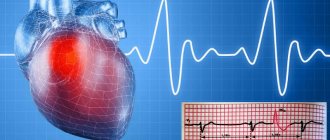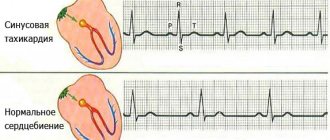Diuretics are prescribed to treat hypertension. Diuretics remove excess water from the body, relieve swelling and quickly normalize blood counts. The drug for high blood pressure Furosemide is one of the most effective diuretics. The medicine is produced in the form of tablets and ampoules with injection solution. Before use, you must read the instructions, since the broad-spectrum drug has its own application features. You should not take Furosemide without a doctor's prescription.
Brief information about the medicine
Release form
The blood pressure medicine Furosemide is produced in the form of tablets and solution.
Tablets of 40 mg, number 50, are packaged in individual blister cells. One blister contains 10 or 25 tablets. There are 50 pieces in total in a pack.
The solution is poured into 2 ml glass ampoules, a total of 10 ampoules per package.
Included with the drug of any release form are instructions for the use of Furosemide.
Composition of the drug
The main active ingredient of the drug for blood pressure is Furosemide. The tablets contain 40 mg of furosemide, and the solution contains 10 mg.
Other components included in tablet Furosemide:
- potato starch;
- lactose;
- polyvinylpyrrolidone;
- microcrystalline cellulose;
- gelatin;
- talc;
- magnesium stearate;
- colloidal silicon dioxide.
Main components of Furosemide solution:
- sodium chloride;
- caustic soda;
- distilled water.
Packaging of Furosemide tablets
pharmachologic effect
The drug has a diuretic, natriuretic, chloruretic effect.
Terms and conditions of storage
It is recommended to store the drug out of the reach of children, in a dark place at a temperature not exceeding 25 degrees.
The shelf life of the medicinal product is 2 years from the date of manufacture. After the expiration date, the medicine cannot be used. It must be disposed of in accordance with sanitary standards.
Conditions for dispensing from a pharmacy
The drug is sold in pharmacies with a doctor's prescription.
What is the price
An inexpensive loop diuretic is sold in all pharmacies at an affordable price:
- tablets, 20 pieces: 25 rubles;
- tablets, 50 pieces: 35 rubles;
- solution in ampoules: 20-30 rubles.
Pharmacodynamics - increases or decreases blood pressure
The action of Furosemide is aimed at removing excess fluid from the body. At the same time, the drug removes magnesium, calcium, phosphates, and bicarbonates.
The drug is prescribed to patients with heart failure to reduce the load on the heart muscle. Preload decreases within 20 minutes after application of the product.
2 hours after taking the tablet, blood flow normalizes, venous tone decreases, the volume of circulating blood decreases, and excess fluid is removed from the body.
Furosemide reduces blood pressure by increasing muscle resistance to the vasoconstrictor effect, reducing the volume of circulating blood, and removing excess sodium from the blood.
Scheme of action of diuretic drugs
The drug is prescribed for high blood pressure, if it increases due to the accumulation of sodium, excess water and increased volume of circulating blood. Furosemide reduces the volume of circulating blood, which leads to a decrease in blood pressure on the walls of blood vessels. Thanks to this, blood flow and pressure are normalized.
Tablets to lower blood pressure begin to act within an hour after administration, the injection is effective within half an hour. The effect lasts for 5-6 hours.
In addition to sodium, calcium and water, Furosemide washes away beneficial magnesium and potassium, so experts recommend taking potassium-sparing or magnesium-containing products in parallel.
When taken for a long time for blood pressure, the drug can be addictive. Over time, the daily dosage becomes small; it has to be increased to obtain the desired hypotensive effect. Do not increase the dose without a prescription from a cardiologist. The duration and frequency of admission is determined by a specialist.
Pharmacodynamics and pharmacokinetics
Inside the kidney, loops are formed from small afferent blood vessels. Together with the membrane and specialized cells (podocytes), a kidney filter is formed, which is surrounded by a capsule. This filter acts like a sieve and allows fluid to pass back into the bloodstream. The kidneys filter 150-200 liters of water during the day. The filter is followed by a tubular system, the task of which is to accumulate primary urine up to 1.5-2 liters per day through the reabsorption of water and substances.
In addition, these cells are also capable of secreting certain substances into the urine. For these purposes, the cells of this system have many different channels and transporters. After passing through this system, the so-called secondary or final urine passes through the ureter, accumulates in the bladder and can be excreted through the urethra.
Furosemide inhibits the transport protein for sodium, potassium and chloride, which is located in the thick section of the loop of Henle. As a result of transporter inhibition, water reabsorption slows down. Thus, an increased amount of water enters the bladder.
If furosemide is taken in tablet form, only half of the substance appears in the blood. Thus, bioavailability is 50, sometimes up to 70%.
In the kidneys, the largest portion is filtered and partially released through the kidney cells. Degradation of the substance in the blood occurs relatively quickly. From 30 minutes to 2 hours, only half the concentration of substances is present in the blood (plasma half-life 0.5-2 hours).
The diuretic effect begins after 30-60 minutes and reaches a maximum after 1-2 hours. After about 6 hours the effect disappears completely. If furosemide is administered intravenously through an infusion, the effect begins within 15 minutes and lasts up to 2 hours.
Many people ask whether furosemide lowers or increases blood pressure. Loop diuretics help lower blood pressure and reduce both preload and afterload on the heart. However, using the drug during a hypertensive crisis is highly discouraged.
Heart
Pharmacokinetics - how long does it take for the drug to work?
The tablets are taken orally, and the Furosemide solution is intended for intramuscular or intravenous administration.
The drug is absorbed from the gastrointestinal tract. The degree of absorption is high. Bioavailability is 60-70% when taken orally. Plasma protein binding is 98%.
The maximum concentration is achieved one hour after oral administration and half an hour after intravenous injection.
The components of the drug penetrate the placental barrier and enter breast milk. Metabolism occurs in the liver. Metabolites are excreted through the kidneys.
The half-life of the drug in tablet form is 1-1.5 hours. The solution is removed within 30 minutes to 1 hour. About 70% of the components are excreted in the urine, the remaining 3% is excreted in the feces. With intravenous use of the drug, 88% of the metabolites are absorbed by the kidneys, and 12% of the metabolites leave through the intestines.
What is Furosemide for?
Indications for use of the drug Furosemide:
- swelling caused by impaired renal function, nephrotic syndrome, chronic heart failure of 2-3 degrees, cirrhosis of the liver;
- acute heart failure, which is accompanied by pulmonary edema;
- hypertensive crisis;
- severe hypertension with regularly high blood pressure;
- cerebral edema;
- increased calcium concentration in blood plasma;
- eclampsia.
The drug Furosemide can be prescribed to force diuresis in case of intoxication of the body with substances excreted by the kidneys.
The medicine can be used for hypertensive crisis
If blood pressure rises against the background of chronic renal failure, a specialist may prescribe Furosemide in the absence of contraindications to taking thiazides. Renal clearance should not exceed 30 ml per minute.
Indications for the use of Furosemide in tablet form and ampoules with solution are completely the same. When administered intravenously to reduce blood pressure, Furosemide acts faster, so the solution is used to urgently lower arterial parameters in severe condition of the patient. This is important when there is a threat of a hypertensive crisis or a high load on the heart.
Treatment of hypertensive crisis in a hospital
Inpatient treatment for a hypertensive crisis is carried out on the basis of examination data, anamnesis, and primary diagnostic procedures. In accordance with the condition, the patient is placed in a general or intensive care ward and the attack is stopped on the first day, gradually lowering the pressure with the help of drug therapy. At the same time, constant monitoring of the condition and basic life support indicators is carried out. Further treatment includes:
- bed rest;
- special diet;
- taking medications according to the developed tactics;
- additional diagnostic examination to determine the condition of the vascular system, target organs (brain, heart, kidneys), consultation with specialists (neurologist, cardiologist), development of rehabilitation measures and recommendations for further treatment and lifestyle management.
When use is contraindicated
Furosemide for hypertension should be taken with caution and only as prescribed by a medical professional, taking into account existing contraindications:
- individual intolerance to components;
- acute urinary retention;
- dyselectrolythemia;
- hepatic encephalopathy;
- urinary bleeding;
- first three months of pregnancy;
- lactation period;
- acute kidney failure with lack of urine output;
- stricture urethral disease;
- severe form of liver failure;
- hepatic coma;
- hyperglycemic coma;
- ancestor;
- obstructive uropathy;
- mitral valve stenosis;
- aortic stenosis;
- gout;
- increased levels of uric acid in the blood;
- heart attack during exacerbation;
- Libman-Sachs disease;
- disturbances of water and electrolyte metabolism;
- inflammation of the pancreas;
- poisoning with cardiac glycosides.
Relative contraindications for prescribing Furosemide for high blood pressure include:
- BPH;
- diabetes;
- low protein levels in the blood;
- atherosclerotic disorder of cerebral vessels;
- hepatorenal syndrome;
- low blood pressure.
If the acid-base balance is disturbed, the volume of circulating blood decreases, or dehydration, you must contact a specialist to draw up a new treatment regimen. The doctor will lower the prescribed dose or stop the drug completely.
In case of a heart attack, the drug is contraindicated
Definition of the concept
A hypertensive crisis is a sharp and sudden increase in blood pressure, which is accompanied by certain complaints and symptoms. There is also a certain list of complications of a crisis. They will be discussed below.
There are no specific pressure figures that would be considered a crisis. For a patient with hypertension, with a working pressure of at least 150/100 mm Hg. Art., a blood pressure of about 200/120 will be considered a crisis. For people who do not suffer from arterial hypertension, as well as hypotensive people, a hypertensive crisis can occur at a pressure level of 140/100 mmHg. Art.
The modern classification of arterial hypertension distinguishes the following types of hypertensive crises:
- Hypertensive crisis type 1 (hyperkinetic). This is the “mildest” version of the crisis, which most often occurs in healthy people or hypertensive patients with mild degrees of the disease. It is often the very first manifestation of the disease. It is characterized by a very sharp, sudden onset, rapid development of symptoms and rapid completion. Type 1 crisis lasts from several minutes to several hours. These crises are relatively easy to treat and can resolve on their own.
- Hypertensive crisis type 2 (hypokinetic). This is a more serious situation, typical for patients with arterial hypertension “with experience”. The disease develops gradually, its symptoms are erased, often disguised as an ordinary headache or weakness. Type 2 crises last up to several days, are difficult to treat and often lead to serious complications.
Complicated and uncomplicated hypertensive crises are classified into a separate classification. As you know, every disease has so-called target organs - that is, those organs that suffer from it first and most severely. In the case of arterial hypertension and crises, the targets are the heart, cerebral vessels, vessels of the eye and kidneys.
Is it used during pregnancy and lactation?
The components of the drug Furosemide penetrate into breast milk and through the placental barrier, so experts do not recommend using Furosemide for high blood pressure during pregnancy or breastfeeding.
A doctor may prescribe Furosemide to a pregnant woman to urgently lower blood pressure or treat preeclampsia. The drug is used for a short period of time under the supervision of a doctor, in a reduced dosage.
Since the components of the drug pass into breast milk, experts do not advise nursing women to take Furosemide for high blood pressure. The components of the drug can reduce lactation and cause adverse reactions in the child. If treatment with Furosemide is necessary for a nursing woman, stop breastfeeding.
How to treat hypertension so that crises do not occur
A hypertensive crisis can only occur in a situation where the patient has had arterial hypertension for a long time, but it has not been diagnosed or is not treated sufficiently. Unfortunately, patient adherence to treatment is very poor. Statistics show that only no more than 5% of patients reach the target (safe) blood pressure level. There are many reasons for this.
- A doctor in a public hospital sometimes has to see up to 60 patients a day. In such a situation, he will not be able to create a trusting relationship with each of the patients, convince them to follow the instructions, and carefully monitor the treatment during subsequent visits.
- Many hypertension medications are inconvenient because you have to take them several times a day. Side effects also happen more often than we would like.
- Up to 10% of patients suffer from “secondary” hypertension, which is caused by kidney problems or other “primary” diseases. The diagnosis in these cases is often made incorrectly. Standard treatment does not produce results; secondary hypertension is “resistant” to it. It is possible to normalize blood pressure only by recovering from the primary illness that increases it.
Patients should realize that the primary responsibility for treating hypertension and preventing crises lies with them. No one but the patient will control how he follows a diet, takes medications, exercises and reduces his level of psychological stress. Those who rely too much on the state and doctors find themselves under a “lying stone” much earlier than they would like.
If you are a patient who wants to maintain normal blood pressure and avoid hypertensive crises, then you can do the following:
- Find the most competent physician or cardiologist you can and consult with him regularly.
- Study the classes of medications for hypertension so that you understand why your doctor prescribed certain medications for you. But do not take medications on your own initiative!
- Read our materials about treatment with combination antihypertensive drugs. This therapy is several times more effective, and lower doses of drugs are required.
- If possible, have your doctor prescribe you effective new generation pills. Usually they can be taken only once a day, and the likelihood of side effects is minimal. New medications for hypertension are often tolerated as well as placebo by patients. True, they cost significantly more.
- Read the articles in the block “Cure from hypertension in 3 weeks - it’s real!” It is highly likely that you will be able to get your hypertension under control without “chemical” medications.
Instructions for use and dosage for high blood pressure
The diuretic Furosemide is produced in the form of tablets and solution. The release form affects the method of use of the drug.
Tablet form
Furosemide blood pressure tablets are intended for oral administration. The dosage and duration of therapy is determined by the attending physician according to indications.
For swelling, the doctor prescribes half a tablet per day in a moderate condition. In case of serious condition of the patient, the dosage can be increased to 3 tablets per day, divided into 2 doses.
If you have high blood pressure, Furosemide should be taken in combination with other antihypertensive drugs, calcium channel blockers, and angiotensin-converting enzyme inhibitors. dosage, duration of therapy, frequency of taking tablets are determined by the attending physician after examination.
Treatment should begin with half a tablet. The maximum daily dosage is 3 tablets. For arterial hypertension, Furosemide is taken before meals. This increases the digestibility of the components. Take no more than 1 tablet at a time.
If taking one tablet does not help, you can take the next one after a few hours. Experts recommend taking Furosemide tablets in the morning to stabilize blood pressure throughout the day. For stable high blood pressure, one tablet is enough.
Dosage for blood pressure in children is calculated based on body weight. For every kilogram, the doctor prescribes 1-2 mg of the drug. Do not give the drug to children more than once a day. After the child’s condition has stabilized, tablets are given every other day.
In case of hypertensive crisis, Furosemide will help to quickly lower blood pressure and stabilize the condition. Doctors recommend taking an injection during a hypertensive crisis, since the solution acts faster than tablets. If there is no solution at home, you can give the patient two Furosemide tablets at once and call an ambulance.
Some women use Furosemide for weight loss. The drug removes fluid from the body, thereby reducing weight and volume. Experts do not recommend using the medication for weight loss, since it does not get rid of excess fat or fight the causes of obesity. Taking Furosemide off-label is dangerous and can cause unwanted side effects.
Regular use of Furosemide flushes potassium and magnesium from the body. In order not to provoke a lack of vital minerals, it is necessary to simultaneously take medications that contain magnesium and potassium.
Regular use of Furosemide can lead to magnesium and potassium deficiency
Injection
Instead of tablets, the doctor may prescribe injections with Furosemide solution. Injections can be intramuscular or intravenous. The doctor prescribes Furosemide injections if it is necessary to quickly stabilize the patient’s condition. The recommended single dosage is 20-40 mg.
Most often, Furosemide injections are given into a vein. The drug is administered slowly over 1-2 minutes. The drug is used intramuscularly in isolated cases, if another method of using the drug is impossible. The drug should not be administered intramuscularly in acute conditions of the patient.
Furosemide in ampoules is prescribed by the attending physician. It determines the frequency of injections, the number of injections, dosage according to the indications and clinical condition of the patient. When the condition normalizes, the doctor transfers the patient to Furosemide tablets.
You cannot increase the dosage on your own without a prescription. It is necessary to maintain the minimum dosage for as long as possible to prevent addiction to the drug.
The dosage of Furosemide injection depends on the indications:
- for swelling, 20-40 mg of solution is prescribed intravenously;
- in case of intoxication of the body, the doctor administers intravenously 20-40 mg of the drug mixed with electrolytes;
- for hypertensive crisis, the initial dosage is 20 mg, gradually the doctor increases the dose to 40 mg; after normalization of the condition, the dose is gradually reduced.
If the indicated dosages do not have the desired therapeutic effect, the doctor may increase the dose by 50%. You can increase the dose no more often than once every two hours. This method of therapy is used for swelling until adequate diuresis is achieved.
If the dosage exceeds 80 mg, the doctor puts in an IV. The rate of administration is 4 mg per minute. The maximum daily dose for drip administration is 600 mg.
The injection solution is used in critical cases or when it is impossible to take tablets
Useful video
About providing first aid during a crisis in the video:
The best remedy for stopping a hypertensive attack, according to a neighbor, a friend, or from the pages of a brochure, can lead to irreversible changes in organs. If the attack is complicated by a stroke, heart attack, subarachnoid hemorrhage, or aortic dissection, even the above drugs can be very harmful.
The information on the MyMedNews.ru website is for reference and general information, collected from publicly available sources and cannot serve as a basis for making a decision on the use of medications in the course of treatment.
MyMedNews.ru
And we also have
Low blood pressure + headache: causes and methods of eliminating malaise due to hypotension
Adverse reactions
Taking the drug can provoke unwanted side effects from various organs and vital systems:
- cardiovascular system: a strong decrease in blood pressure to critical levels, heart rhythm disturbances, orthostatic collapse, increased heart rate;
- nervous system: dizziness, headaches, muscle weakness, clouding of consciousness, convulsions, depression, loss of strength, sensitivity disorder, drowsiness;
- organs of perception: impaired visual and auditory function;
- digestive system: thirst, dry mouth, indigestion, complete loss of appetite, cholestasis, loose stools, difficulty defecating, vomiting, inflammation of the pancreas;
- genitourinary system: kidney inflammation, frequent urge to urinate, acute urinary retention, impotence, decreased amount of urine output, tubulointerstitial nephritis, blood in the urine;
- circulatory system: impaired blood flow, aplastic anemia, decreased platelet count, decreased number and level of leukocytes;
- allergic reactions: erythema, skin peeling, urticaria, Werlhof's disease, necrotizing angiitis, vasculitis, chills, itching, photosensitivity, anaphylaxis;
- metabolism: dehydration, lack of magnesium, potassium, sodium, chlorine, calcium, disturbance of electrolyte metabolism, increased risk of thrombosis, decreased circulating blood volume;
- laboratory indicators: increased cholesterol levels in the blood, increased blood sugar, the presence of glucose in the urine, the appearance of uric acid in the blood.
Treatment of hypertensive crisis according to standards
Relief of a hypertensive crisis is carried out taking into account its type. There are short-term (lasting several hours) and long-term (lasting several days) attacks of complicated and uncomplicated types. Conditions aggravated by cardiac or cerebral variants (accompanied by disturbances of heart rhythm, cerebral circulation, transient ischemic attack, hypertensive encephalopathy and other symptoms) require emergency hospitalization and treatment of the patient in a hospital.
In an uncomplicated type of pathology, after stopping the attack by gradually (over 3-5 hours) reducing blood pressure, the patient is offered to switch to outpatient treatment. Therapy includes taking antihypertensive medications, preventing complications from the cardiovascular system, reducing or eliminating exogenous and endogenous factors that provoke high blood pressure and its sudden surges.
Furosemide overdose
Symptomatic manifestations of drug overdose:
- a sharp drop in blood pressure to critical levels;
- decrease in circulating blood volume;
- dehydration;
- collapse;
- blood thickening;
- shock;
- heart rhythm disturbance;
- atrioventricular block;
- ventricular fibrillation;
- thrombus formation;
- acute blockage of blood vessels by blood clots;
- clouding of consciousness;
- sleepy state;
- acute renal failure with decreased urine production;
- complete indifference;
- paresis.
To eliminate the consequences of an overdose, it is necessary to restore the water-electrolyte balance, circulating blood volume, and acid-base balance. With severe symptoms of overdose, emergency medical attention is required. When you go to the hospital, the doctor will prescribe the correct symptomatic treatment.
Furosemide overdose can lead to dehydration
How to relieve a hypertensive crisis at home
Clinical signs of an attack accompanying an increase in blood pressure to levels from 180/120 mm Hg. Art. and higher are dizziness, nausea or vomiting, convulsions, weakness or overexcitation, uncontrollable attacks of fear, pain in the heart. If they appear, you should immediately call an ambulance. Help with a hypertensive crisis at home, which needs to be provided to the patient while waiting for a specialist to stop the attack, consists of the following measures:
- Provide access to fresh air by opening windows, free the patient from clothing that is constricting the throat and chest.
- Help the patient take a sitting or reclining position, provide him with a state of rest, stay nearby.
- Give the victim one of the following drugs: Clonidine (Clonidine) (0.75-1.15 mg), Captopril (25-50 mg), Cordaflex (10-20 mg) - under the tongue; Corvalol, Valocordin or valerian tincture – 15-30 drops.
Drug compatibility
The drug Furosemide should be taken only as directed. Complex therapy is selected by the attending physician according to indications, taking into account drug interactions.
Furosemide is incompatible with some medications:
- increases the content of the components Uregit, Cisplastin, Chloramphenicol, Amphotericin B, aminoglycosides, cephalosporins, which can lead to intoxication of the body;
- increases the effectiveness of dimethylxanthine, Diazoxide;
- reduces the effectiveness of Allopurinol, antidiabetic drugs;
- reduces the rate of lithium excretion from lithium-containing drugs, which can lead to poisoning of the body;
- increases neuromuscular blockade when taking muscle relaxants;
- enhances the effect of antihypertensive drugs, dose adjustment is required;
- reduces the effectiveness of non-depolarizing muscle relaxants.
Other drugs may affect the pharmacokinetic and pharmacodynamic properties of Furosemide tablets:
- Amphotericin B and glucocorticoids increase the risk of potassium deficiency;
- amines reduce the effectiveness of Furosemide;
- cardiac glycosides increase the risk of intoxication, provoke potassium deficiency, and increase the half-life;
- calcium channel blockers increase the level of furosemide in the blood;
- Sucralfate and nonsteroidal anti-inflammatory drugs reduce the diuretic effect, suppress the production of prostaglandins, and provoke excessive synthesis of aldosterone and renin;
- Salicylates increase the toxicity of Furosemide.
Ampoules with Furosemide solution cannot be mixed with medications whose acidity level is less than 5.5.
Furosemide injections should not be administered simultaneously or after chloral hydrate, as this may lead to unwanted side reactions:
- bouts of vomiting;
- hyperemia;
- excitement;
- hyperhidrosis;
- increase in blood pressure;
- increased heart rate.
Furosemide should not be used simultaneously with ototoxic aminoglycosides, as this can lead to complete hearing loss.
Compatibility with other drugs must be determined by a doctor
Frequently asked questions and their answers
Below are answers to questions that patients often have about the use of the diuretic drug furosemide.
Is it possible to drink furosemide every day?
Furosemide is taken every day as prescribed by a doctor for people whose liver cirrhosis is complicated by ascites - an accumulation of fluid in the abdominal cavity. Previously, this daily medication was prescribed to patients with heart failure and hypertension. Now the new drug torasemide (Diuver) is replacing furosemide in the treatment of heart failure. Why torasemide is better is described in detail below. If you take furosemide every day for heart failure, discuss with your doctor whether it should be replaced with torasemide.
If you have hypertension, it is better not to take furosemide daily, like any other loop diuretics. These medications cause too many side effects. Use blood pressure pills that act more gently. Consult your doctor to find a medication regimen that will bring your hypertension under control without worsening your health and test results. Some people take furosemide occasionally when they have a hypertensive crisis. It is better instead to properly treat hypertension so that there are no pressure surges at all. Do not take furosemide daily for weight loss or swelling! This can cause terrible side effects. They are vividly described on many websites and forums in Russian.
Can I take this medicine at night?
As a rule, doctors prescribe taking furosemide in the morning or afternoon, and not at night, so that the patient does not have to get up to go to the toilet too often at night. For some reason, your doctor may tell you to take furosemide at night. In this case, follow his instructions. Many people have voluntarily tried taking this diuretic medicine at night to avoid swelling and look good the next morning. Russian-language sites and forums are replete with terrible descriptions of the side effects that such self-medication leads to. The authors of numerous frightening stories about the side effects of furosemide are not exaggerating at all.
Are furosemide and alcohol compatible?
Alcohol increases the frequency and severity of furosemide side effects. If you use a diuretic drug and alcohol at the same time, your blood pressure may drop too low. Symptoms of this: headache, dizziness, fainting, palpitations. Furosemide often causes orthostatic hypotension - dizziness when standing up suddenly from a sitting or lying position. Alcohol may increase this side effect. Alcohol dehydrates the body and removes beneficial minerals, just like diuretics. Furosemide should be taken only for severe illnesses in which alcohol consumption is completely prohibited. Even a small dose of alcohol will be harmful to you. For mild illnesses that allow moderate alcohol consumption, try to replace the loop diuretic with a more gentle drug or avoid taking medications altogether.
How to take furosemide and Asparkam together?
Take furosemide and Asparkam together only as prescribed by your doctor, and have regular blood tests to check your potassium levels. Furosemide deprives the body of a valuable electrolyte - potassium. Asparkam and Panangin tablets replenish potassium reserves. Discuss with your doctor whether you need to take furosemide and Asparkam at the same time. Don't do this on your own initiative. Asparkam has contraindications. Please read them before using this product. Take both medications in the dosages prescribed by your doctor, as many times a day as your doctor prescribes.
Why doesn't furosemide work? The patient's swelling does not decrease.
Furosemide is only a temporary solution to the problem of edema. It does not affect their cause, and sometimes even worsens it. If the cause cannot be eliminated, then over time even potent diuretics stop working. Perhaps the patient's kidneys have become so bad that the body has stopped responding to the diuretic medicine. In such situations, you cannot voluntarily increase the dose of furosemide or change it to another diuretic. Talk to your doctor about what to do.
How to restore kidney function after treatment with furosemide?
To find out how furosemide affected the kidneys, ask about the glomerular filtration rate (creatinine clearance), and then take a blood test for creatinine. Learn and follow the rules for preparing for this test to ensure accurate results. Creatinine clearance is the main indicator by which you can judge whether a person's kidneys are working well.
It is rare that unauthorized use of one or more furosemide tablets will cause permanent kidney damage. Most likely, your health and kidney function will return to normal soon after you stop taking the diuretic medication. If you have experienced unpleasant side effects, this will serve as a lesson: you should not take strong drugs on your own initiative.
Unfortunately, for people who develop kidney failure, there is no easy solution to the problem. Furosemide damages the kidneys. But if the swelling is so severe that it is impossible to tolerate it, then you have to use this remedy, despite the side effects. Follow your doctor's diet and medication instructions to delay the point at which your kidneys fail completely. There is no effective alternative treatment for kidney failure. Diabetes patients should study the article “Diet for kidneys in diabetes”.
Torsemide or furosemide: which is better?
Torsemide is better than furosemide for the treatment of heart failure. Both of these medications are loop diuretics. Torsemide was invented 20 years later than furosemide, in 1988. In Russian-speaking countries, the first drug torasemide was registered in 2006.
Source https://lechenie-gipertonii.info/furosemid.html
Many people refer to the phrase “hypertensive crisis” as something frivolous. This is a false and dangerous misconception. A huge percentage of deaths and severe disability are caused by hypertension and its complications.











